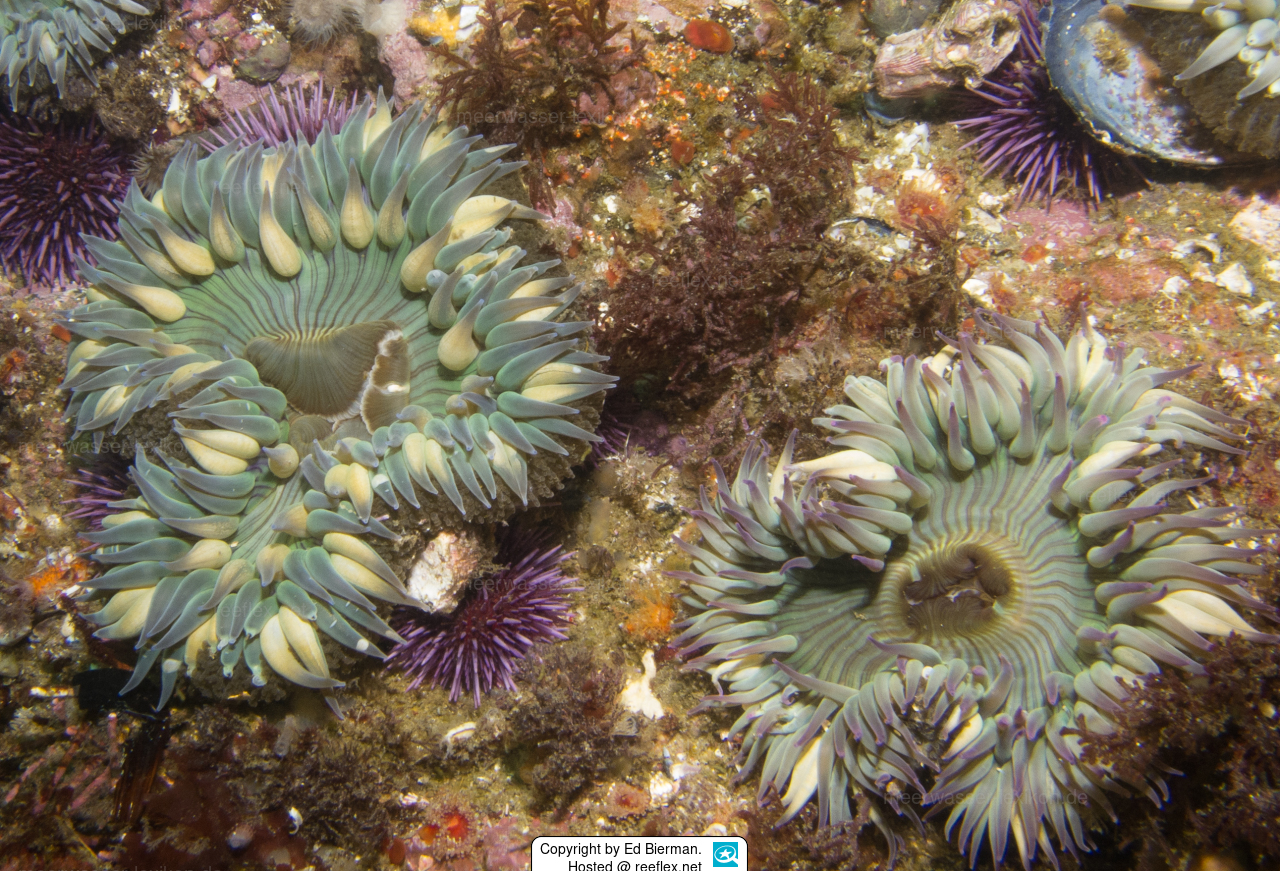Info
Sunpowered by zooxanthelles and zoochlorelles.
Host of Doridicola confinis (Humes, 1982) (parasitic: ectoparasitic)
Metaxymolgus confinis Humes, 1982 (parasitic: ectoparasitic)
Predators: the seaslug Aeolidia papillosa, the seastar Dermasterias imbricata and the scorpionfish Clinocottus globiceps.
Synonymised names:
Actinia (Taractostephanus) elegantissima Brandt, 1835 · unaccepted
Actinia elegantissima Brandt, 1835 · unaccepted (original binomen)
Anthopleura elegantisima · unaccepted
Anthpleura elegantissima · unaccepted
Bunodactis elegantissima (Brandt, 1835) · unaccepted
Cribrina elegantissima (Brandt, 1835) · unaccepted







 Ed Bierman, USA
Ed Bierman, USA


































